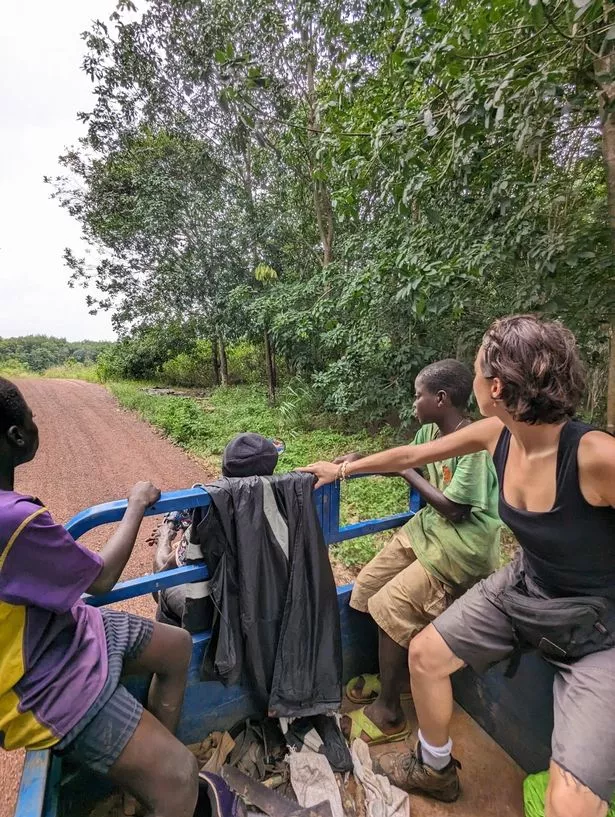Courtney Allan hitchhiked from Guangzhou in China to the Russia-Mongolia border – a journey which took 50 days – and has described her method as “such a great way to see the world for free”
A young woman has travelled 5,000 miles without spending a penny – by hitchhiking.
Courtney Allan grabbed lifts from strangers to get from Guangzhou in China to the Russia-Mongolia border, a journey which took 50 days. Courtney, 26, says she feels “incredibly blessed”, having seen some “beautiful countries” for free.
‘It’s (hitchhiking) becoming more common though, and it’s such a great way to see the world for free… I feel incredibly blessed. Hitchhiking was so not normal for so long, it didn’t even seem like an option,” Courtney said.
The Canadian native first experienced hitchhiking in the UK as, in late 2023, she found public transport too expensive to get around during a holiday here. During her three-week visit to the UK, Courtney was able to persuade a driver to give her a lift from Bath, Somerset into Wales.
And she since used this method during a trip to Africa – travelling from Morocco to Cape Town – a distance of more than 8,000 miles, and has now completed the 5,000-mile trip – for free – in Asia.
READ MORE: Two of most popular holiday hotspots ‘dangerous’ for UK tourists, experts warnREAD MORE: ‘I’m traveling thousands of miles to LA without catching a single flight — one moment was surreal’
Courtney, from Toronto, said she has “not yet felt in danger”. She continued: “When I think of who I am now, it’s an exponential growth from who I was when I first visited the UK two years ago.
“When you’re hitchhiking, you’re with the people who live in that country. You get a much more intimate experience. It’s such a good way to meet local people and get the best things to do in a place. This isn’t the stuff you see on TripAdvisor.”
Courtney, who documents her trips on her Instagram page @hitchhikercourtney, travelled through 16 countries to reach Cape Town on her African adventure. In that time, she said she spent less than $20 (£15) on transport, of which more than half was spent on a single ferry across the Congo River.
But she didn’t have to pay a penny on transport during her Asian journey, which saw her catch rides through China, north through Mongolia to the border of it and Russia. The journey started in May this year, ending this week. The social media influencer continued: “My budget would have gone up by thousands if I had been paying for transport.”
She added: “Women are often scared of going out into the world because of the risks. But there is a risk everywhere, every day, no matter what you’re doing. You can’t let them get the better of you. For me, the benefits of being able to explore the world outweigh those risks.”




